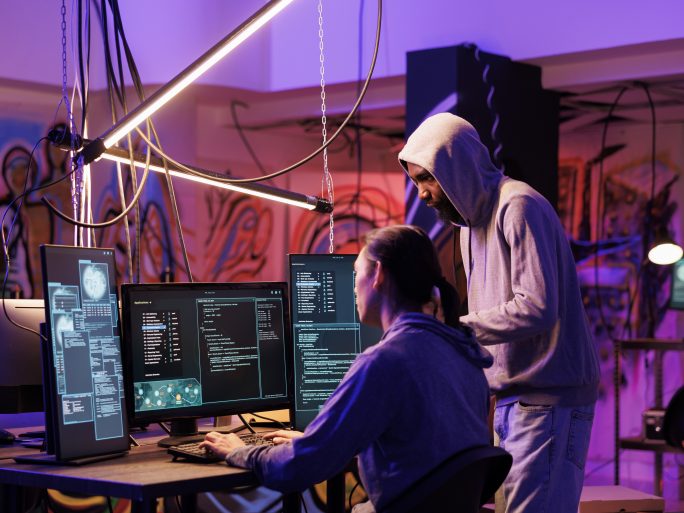Pentesting: From Luxury to Standard

Automation is making pentesting affordable even for smaller companies, says Mareen Dose from indevis.
Pentesting is an effective way to assess the robustness of IT security measures—and it’s already a legal requirement for some organisations. Historically, it was considered a costly, manual security process, accessible mainly to large corporations with substantial resources. However, with the advent of Automated Security Validation, small and medium-sized enterprises (SMEs) can now access this vital security measure at an affordable cost. But what exactly is pentesting?
Why Is Pentesting Important?
Pentesting, short for “penetration testing,” involves security experts attempting to breach a company’s IT infrastructure in a controlled manner, simulating an attacker’s approach. The goal is to uncover critical vulnerabilities and address them before cybercriminals can exploit them. This process allows companies to evaluate their security measures, improve them, and realistically assess their risk exposure.
Relying solely on vulnerability management systems is insufficient. While such systems prioritise vulnerabilities using standardized CVSS scores (Common Vulnerability Scoring System), they don’t provide a customised or realistic risk assessment. Pentesting, therefore, remains a crucial part of modern IT security infrastructure.
Manual vs. Automated Pentesting
Traditionally, pentesting has been a manual process. IT experts simulate realistic attacks on the company network within a set timeframe, adopting an attacker’s perspective. Automated pentesting—also known as Automated Security Validation—leverages software and artificial intelligence to continuously identify vulnerabilities in real time. Each method has its strengths and weaknesses, depending on a company’s needs and use case.
Manual Pentesting: Best for In-Depth Analyses
Manual pentests provide thorough, tailored analyses specific to a company’s unique circumstances. Human expertise is indispensable, particularly in complex scenarios involving social components, such as red teaming or testing social engineering vulnerabilities. Manual testing also offers flexibility for assessing specific vulnerabilities or dynamic attack scenarios. However, it provides only a snapshot of security at a specific point in time. Due to high costs, companies often conduct manual pentests annually at most, which means the findings can quickly become outdated.
Automated Security Validation: Efficient and Scalable
Automated pentesting, or Automated Security Validation, offers standardized and efficient testing. It enables continuous monitoring of predefined areas within a company’s network, delivers comparable reports, and requires fewer resources. AI-powered tools rapidly and reliably detect and assess vulnerabilities through a central platform. Integrated controls ensure operations remain uninterrupted during testing.
Additionally, experienced security researchers keep the pentesting platform updated with the latest threat intelligence. This enables companies to maintain real-time awareness of their security posture, monitor changes to attack surfaces—such as after system updates or patches—and respond swiftly when necessary.
Which Option Is More Cost-Effective?
Manual pentesting is generally more expensive because it requires highly skilled experts with expertise comparable to professional hackers. Automated Security Validation, on the other hand, shifts much of the workload to AI-driven tools, reducing overall costs.
However, automated pentesting isn’t inherently cheaper. Costs depend on factors such as the number of assets and IP addresses to be tested. The main advantage is that companies can conduct multiple pentests annually at predictable, manageable costs.
Automated Security Validation as a Managed Service
Although pentesting remains resource-intensive, automated security validation is now available as a managed service, making it accessible to SMEs. With pentesting-as-a-service, companies can perform continuous security checks at reasonable costs without straining their resources. This allows smaller organizations to enhance their protection against cyber threats using the latest tools.
Compliance and Legal Requirements: Pentesting as a Mandate
For many organizations, pentesting has transitioned from optional to mandatory. Entities subject to regulations like NIS2 or the Digital Operational Resilience Act (DORA) are legally required to conduct regular security checks. Pentesting is a proven and effective solution for meeting these obligations.
Pentesting is also often a prerequisite for obtaining cyber insurance. As regulatory requirements expand, businesses in all sectors should start considering the adoption of pentesting to stay ahead of compliance demands.
How to Successfully Introduce a Pentesting Platform
Pentesting is most effective when built on a solid foundation of basic security measures. Without these, the results and recommended actions can become overwhelming. Setting up access to an Automated Security Platform is usually straightforward and often requires no local installations.
For companies lacking in-house expertise, external specialists or Managed Security Service Providers (MSSPs) can provide valuable support. MSSPs assist in setting up pentests, conducting ongoing Automated Security Validation, analyzing results, and implementing recommendations. Their Pentesting-as-a-Service offerings also feature flexible licensing models, making them ideal partners for continuous security management.
Conclusion: Prepare Today
Thanks to automation, pentesting is shifting from a luxury to a critical component of IT security strategies. According to Gartner’s 2024 Hype Cycle for Security Operations, pentesting and the emerging category of “Adversarial Exposure Validation” are recognized as innovation drivers.
Both manual and automated methods have their place and can be used in combination depending on a company’s needs. With the right tools and strategies, businesses can proactively monitor their IT systems for vulnerabilities and protect themselves against cyber threats. For those lacking internal expertise, working with experienced MSSPs can ensure robust and continuous security management.
![]()
Mareen Dose
Presales Consultant at indevis